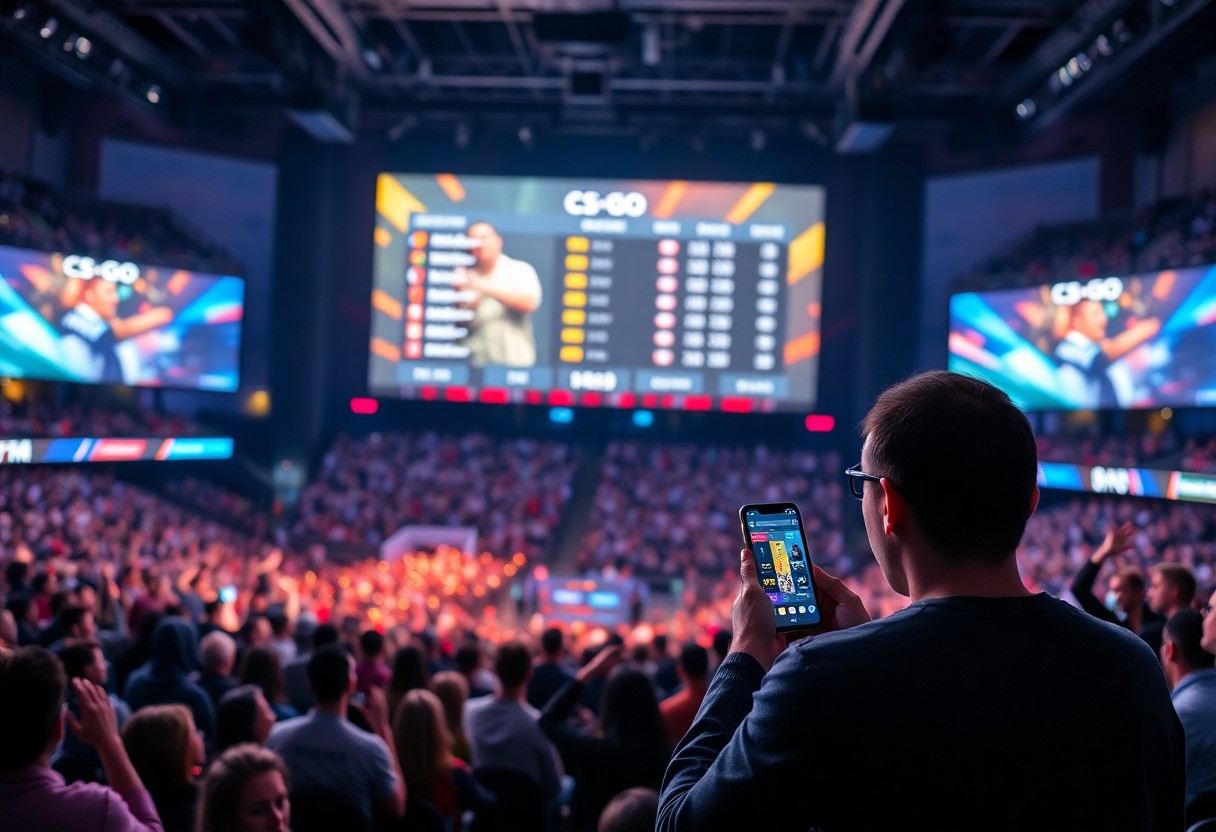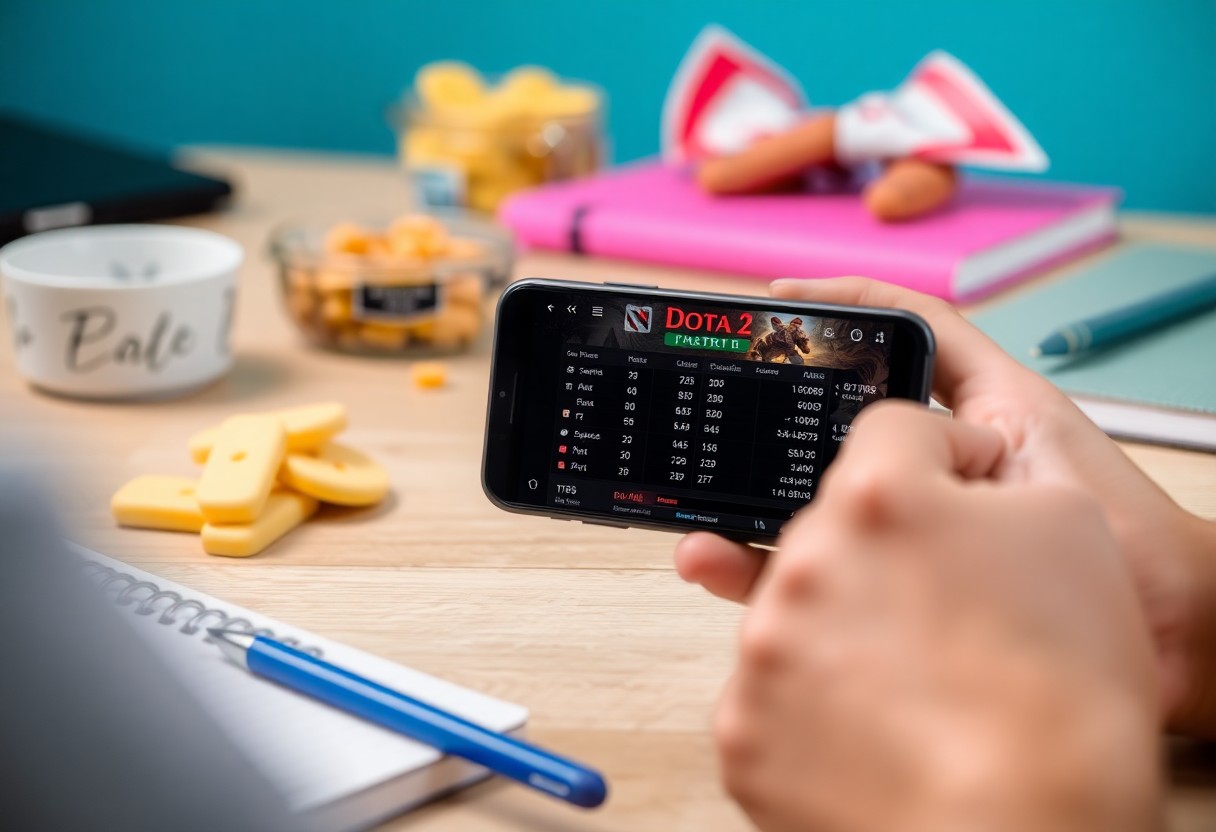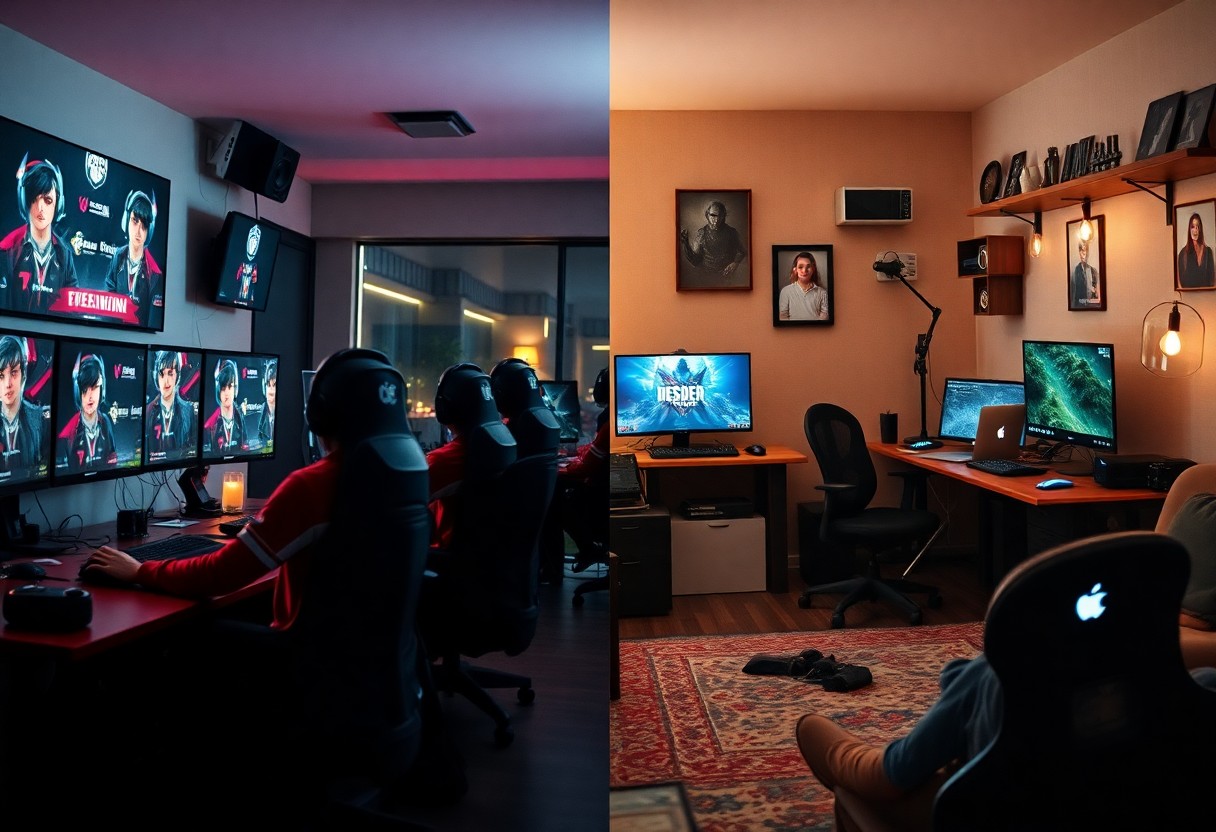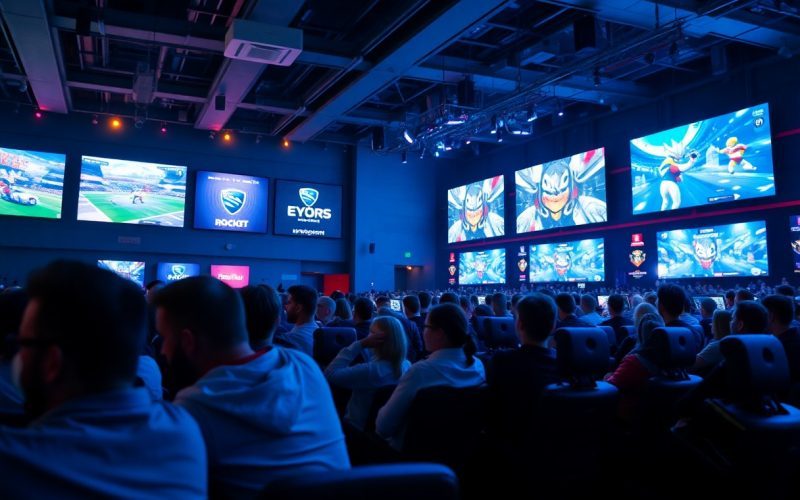Houses dedicated to gaming have long been a staple in the esports community, providing structured environments for teams to practice and bond. However, with the rise of remote training options, the landscape of competitive gaming is evolving. This blog will explore the advantages and disadvantages of both gaming houses and remote training setups, examining aspects such as team dynamics, accessibility, and overall performance. As the industry adapts to new technologies and methodologies, understanding these different training approaches is imperative for aspiring gamers and organizations alike.
Definition of Gaming Houses
Before submerging into the contrasts between gaming houses and remote training, it is imperative to define what a gaming house is. A gaming house typically refers to a dedicated facility where esports players live and train together. These houses are equipped with the necessary equipment, high-speed internet connections, and often have a living space where players can interact off the game. The idea behind a gaming house is to create an environment that fosters teamwork, synergy, and continuous practice, limiting distractions from the outside world while optimizing conditions for peak performance in competitive settings.
Overview of Gaming Houses
Gaming houses have become a cornerstone of the esports industry, particularly among professional teams dedicated to titles such as League of Legends, Dota 2, and Counter-Strike: Global Offensive. In these settings, players not only compete but also engage in rigorous training regimens, strategize, and build camaraderie with one another. This immersive environment is designed to enhance communication skills and team dynamics, attributes that are pivotal in high-stakes competition where split-second decisions can dictate the outcome of matches.
Advantages of Gaming Houses
To fully appreciate the benefits of gaming houses, one must consider their potential to develop strong team cohesion and focus. Living and training together allows players to establish deeper relationships that can translate into better collaboration during matches. This proximity fosters an environment of immediate feedback and teamwork, imperative elements in the fast-paced world of competitive gaming where synergy can make or break a team’s endeavor.
Considering the advantages, gaming houses offer a structured environment that can lead to improved performance levels. The combination of scheduled training, strategic discussions, and more relaxed team-building activities enhances both skill development and mental fortitude. Furthermore, the shared living experience can minimize distractions, allowing players to immerse themselves fully in their craft. Together, these aspects serve to create a strong foundation for a professional gaming career, potentially leading to greater success in esports competitions.
Understanding Remote Training
Some gamers and training organizations have embraced remote training as an innovative alternative to traditional gaming houses. This model enables players to practice, strategize, and collaborate from various locations, using advanced communication tools and software to replicate an immersive training environment. As technology continues to evolve, remote training has become increasingly sophisticated, allowing for a seamless connection between team members despite geographical barriers. With the growing prevalence of high-speed internet and top-tier streaming platforms, players can effectively engage in training sessions just as they would in a physical setting.
Overview of Remote Training
For gamers, remote training involves utilizing online platforms for practice sessions, team meetings, and tactical discussions. Players can log into their respective game accounts and perform drills or strategize together using voice and video communication tools. This format not only fosters flexibility in scheduling but also allows teams to scout talent globally without being tethered to a specific location. Remote training has proven to be a valuable asset, especially for organizations that seek to attract diverse talent and maintain competitive edges in a rapidly changing gaming landscape.
Benefits of Remote Training
By opting for remote training, teams can enjoy various benefits, including cost-effectiveness and increased accessibility. With less need for physical infrastructure and lower associated living costs, organizations can allocate resources more efficiently. Moreover, players who may not otherwise have the opportunity to join a gaming house due to geographic constraints can now compete at the highest level, leveling the playing field for aspiring gamers from all walks of life.
Hence, the advantages of remote training extend beyond just geographical flexibility. It enhances players’ ability to focus on their individual performance while still benefiting from team dynamics through virtual collaboration. With the expansion of technology, gamers can harness data analytics and performance tracking tools to evaluate their skills, receive constructive feedback, and actively work on areas that need improvement. This self-driven approach creates a more personalized training experience and can lead to significant advancements in individual and team performance over time.
Comparative Analysis
The debate between gaming houses and remote training has gained traction as both methodologies have distinct implications for players’ performance, development, and overall experience. Each approach presents advantages and challenges that deserve thorough examination to understand their effectiveness in competitive gaming environments.
| Aspect | Gaming Houses | Remote Training |
|---|---|---|
| Team Collaboration | High, immediate communication and synergy | Variable, reliance on digital tools for coordination |
| Practice Schedules | Structured, often more rigorous | Flexible, allowing players to set their own pace |
| Game Analysis | Enhanced through real-time feedback | Potentially delayed, dependent on software tools |
Performance Outcomes
Along the lines of performance outcomes, gaming houses often lead to enhanced team dynamics and immediate feedback, which can foster rapid improvement. Players in a shared environment can benefit from direct communication, fostering a stronger team bond and facilitating real-time adjustments to strategies. This collaborative atmosphere tends to encourage creativity as players can bounce ideas off each other instantaneously, elevating their game play to new levels.
On the other hand, remote training offers players the flexibility to develop at their own pace, allowing for personalized skill improvement. This approach often leads to players focusing on specific weaknesses through targeted practice schedules. While this independent style of training is beneficial for individual growth, it may lack the synergistic elements found in a gaming house setting, potentially resulting in slower overall team cohesion during competitive play.
Cost Efficiency
Comparative cost efficiency between gaming houses and remote training raises important considerations for organizations and players. Gaming houses often incur higher initial costs, such as rent, utilities, and upkeep of living spaces, which can strain budgets especially for newer teams. In contrast, remote training allows players to practice from their own homes, minimizing costs related to accommodation and facility maintenance, thus proving to be a more economical option for many esports organizations.
But it is crucial to evaluate the long-term value that gaming houses bring, particularly in terms of performance gains and potential revenues from sponsorships, merchandise, and match winnings. Additionally, the camaraderie and team spirit fostered by living and training together can lead to a stronger brand identity and fan loyalty, which may justify the initial higher expenses incurred by gaming houses. Ultimately, the decision between the two methods requires careful consideration of both immediate costs and the potential impact on a team’s success.
Psychological Effects on Gamers
Now, the psychological landscape of gaming is multifaceted, influenced heavily by the environment in which players train and compete. Gaming houses provide a communal space that facilitates social interactions, while remote training often creates a more solitary experience. Each setting has unique implications on mental health and overall gaming performance, directly impacting players’ well-being and their approach to the game.
Social Interaction in Gaming Houses
To thrive in a gaming house, players benefit from direct social interactions with their teammates and staff. Being surrounded by peers can foster camaraderie and a sense of belonging, which are necessary elements of mental well-being. This social environment promotes healthy competition and enables players to share strategies and experiences, further enhancing their skills. Moreover, regular face-to-face communication can mitigate feelings of stress or anxiety that may arise during high-pressure tournaments.
Isolation in Remote Training
Houses that focus on remote training may inadvertently contribute to feelings of isolation among gamers. The lack of physical interaction with others can lead to a disconnection that affects motivation and overall mental health. Players who train alone may struggle with self-discipline and can find it challenging to stay engaged with the game without the encouragement and support of a team environment. Isolation can also amplify feelings of loneliness, which detracts from the enjoyment of gaming and may even lead to burnout.
Due to the disconnected nature of remote setups, players might face unique psychological challenges. Without the immediate feedback and support from teammates, they may experience heightened anxiety and lower morale, particularly during stressful situations. Furthermore, the absence of a supportive community can hinder emotional resilience, making it harder to cope with losses or setbacks. As a result, understanding the impact of these environments on psychological health is vital for fostering well-rounded and resilient gamers.
Technology and Accessibility
Many factors influence the effectiveness of gaming training, with technology and accessibility standing out as key components in determining the success of players, whether in gaming houses or through remote training methods. The advancements in technology have made it easier for players to access resources and maintain a competitive edge, but the degree to which these technologies are integrated into training environments can vary widely. In gaming houses, the infrastructure is often optimized for peak performance, allowing for high-speed internet, advanced hardware, and well-structured schedules. In contrast, remote training can present challenges in ensuring consistent access to similar resources, leading to disparities in performance based on geographical constraints.
Innovations in Gaming Houses
Gaming houses have embraced technological innovations to create an environment that fosters both competition and collaboration among players. These facilities are designed with state-of-the-art equipment, including high-refresh-rate monitors, ergonomic gaming chairs, and powerful gaming PCs. Furthermore, many gaming houses leverage analytics and performance-tracking software to monitor progress and optimize training regimens. This focused environment not only enhances the gameplay experience but also allows for real-time feedback and strategic discussions, resulting in the continuous improvement of players.
Tools for Remote Training
To facilitate effective remote training, gamers utilize a variety of tools designed to mimic the structured training environment of gaming houses. These include communication platforms like Discord for team coordination, video conferencing tools for strategy discussions, and specialized gaming software that monitors player performance metrics. Additionally, streaming services enable players to engage in watch parties and online coaching sessions, where they can learn from experienced coaches in real-time. This creates an interactive and informative training experience that transcends the limitations of physical space.
Remote training has made significant strides in recent years, with many platforms emerging that offer tailored training modules for various gaming genres. These modules can include practice routines, strategic breakdowns of gameplay, and even personalized coaching sessions. As a result, players can now receive expert guidance without the need to be physically present in a gaming house, ensuring that talented individuals can pursue competitive gaming no matter their location. With this increased accessibility, the landscape of gaming training continues to evolve, breaking down geographical barriers and leveling the playing field for aspiring gamers worldwide.
Case Studies
Unlike conventional training environments, both gaming houses and remote training methods have shown unique outcomes in the performance of teams across various titles. Numerous studies and statistics reveal the effectiveness of each approach:
- The Dota 2 team OG, who famously won The International 2018, trained in a dedicated gaming house, attributing their synergy and communication improvements to the experience.
- Team Liquid leveraged remote training strategies with their League of Legends squad, allowing players from different countries to maintain high-level communication and coordination, resulting in a top-four finish at Worlds 2020.
- An analysis of CS:GO teams showed that participating in a dedicated gaming house can lead to a 20% increase in win rates, with FaZe Clan showcasing a remarkable improvement after transitioning to this model.
- A survey of remote training experiences revealed that 75% of players from professional teams felt their individual skill levels improved significantly due to the flexibility and tailored training schedules.
Success Stories from Gaming Houses
Beside OG’s extraordinary success in 2018, other teams like Team Secret in Dota 2 have also benefited from the gaming house model, fostering camaraderie and focused practice. Team Secret’s consistent presence at the top of the competitive scene demonstrates how residing together can enhance teamwork and strategy development.
Additionally, in the Call of Duty landscape, dominant teams like FaZe and Optic have maintained high performance through extensive time spent in gaming houses. This environment allows for continuous interaction, which facilitates quick adjustments and strategizing that can prove to be vital in high-stakes scenarios.
Success Stories from Remote Training
Case studies illustrate that remote training can be advantageous for esports teams seeking flexibility without sacrificing the quality of practice. Teams such as G2 Esports, which adopted an online approach during the pandemic, have reported increased adaptability and improved performance metrics. Their ability to communicate effectively through digital tools formed the backbone of their successes, allowing them to compete at high levels without a physical training facility.
In addition, organizations leveraging remote training gained the ability to recruit top talent from various regions, improving their competitive edge. For instance, Cloud9 successfully integrated players from different continents, enhancing their team dynamics and performance consistency through innovative remote training solutions. These success stories highlight that while traditional gaming houses offer unique benefits, remote training presents an equally robust alternative tailored for the modern, rapidly evolving landscape of competitive gaming.
Conclusion
Presently, the debate between gaming houses and remote training in esports continues to be a significant topic among players, organizations, and fans. Gaming houses, with their immersive environments and team-building dynamics, provide a structured setting that fosters camaraderie and synergy. This can lead to improved performance through collaborative practice and immediate feedback, which is often harder to replicate in remote training setups. The benefits of face-to-face interactions in a dedicated space cannot be understated, as it allows for spontaneous discussions and strategizing that enhance team cohesion and adaptability.
On the other hand, remote training has emerged as an adaptable alternative, particularly in light of global events that have prompted a shift in how teams operate. It offers flexibility, allowing players to work in comfortable environments while also catering to diverse schedules. This training method can also draw on a wider range of resources, utilizing various online platforms for analyses and skill development. Ultimately, the choice between gaming houses and remote training is influenced by the specific needs, goals, and circumstances of each team. Organizations must carefully evaluate the pros and cons of each approach to find the optimal balance for success in the competitive landscape of esports.






